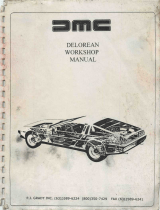
•
•
•
Troubleshooting
Horns
•The horns won't honk
oCheck the air tank for air pressure. If your air gauge reads 0 PSI, refer to the steps on page 12 to
remedy the lack of air in the tank.
oCheck the wiring for the horn solenoid valve. If the valve has a loose ground connection, it will not work
properly. Make sure the valve is connected to your activation switch.
oCheck the power source for the horn activation. Use a test light or voltmeter to check for +12v on the
lead coming from your stock horn wire or power source. Make sure power is coming into and out of the
activation switch/button.
•The horns don't sound right
oIf your horns start to squeak or sound high-pitched, drain the tank. Moisture buildup in the tank is finding
it's way from the tank into your horns. This causes them to squeak.
Drain the tank of moisture.
oCheck and ensure the end of each bell(s) isn't obstructed or blocked. The horns will sound off at a
different pitch when the opening of the bell is blocked.
•The horn honks on it's own as soon as it is wired up
oThis is a tricky problem to fix and can be confusing to most. On some vehicles, the stock horn receives a
constant feed of power from the battery. When the wheel is pressed, a switch inside the steering wheel
creates the ground for the horn circuit and the horn honks. When you wire your OEM horn wire to our
valve, the valve ground completes the circuit and causes the constant honk.
We can fix this problem by following these steps:
1. Disconnect the valve ground from the frame.
2. Splice from the OEM horn NEGATIVE lead and route this to the toggle switch.
3. Connect the opposite lead of the toggle to the black wire on the valve.
This makes it so that the valve is actuated from the negative side of the OEM wiring. If you have
trouble with this, give our team a call @ (877)-209-8179.
oMake sure the valve isn't connected to a constant power source. If the valve is receiving power
constantly, it will stay open.
•It sounds like the horns are going off at different times
oRemove the back-cap from each horn bell with a phillips head screwdriver. Clean the internals of each
bell with warm water and soap. Rinse and re-assemble.
Can't find your issue listed above? Give our team a call @




















